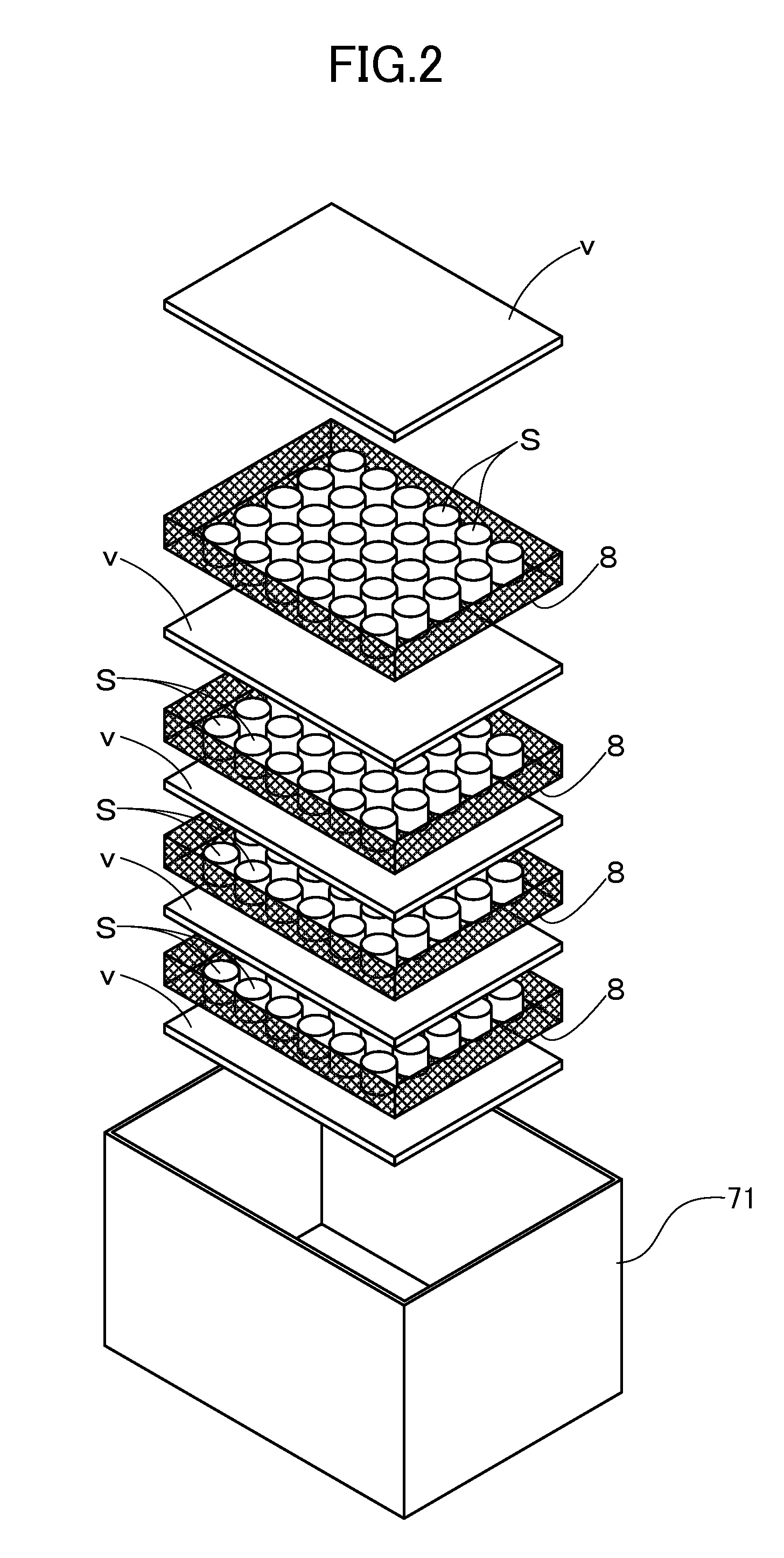Method of recycling scrap magnet
a scrap magnet and magnet technology, applied in the field of scrap magnet recycling, can solve the problems of scrap magnet generation, poor sintering, poor molding, etc., and achieve the effect of advantageously improving the magnetic properties of the recycled sintered magnet and further enhancing the productivity
- Summary
- Abstract
- Description
- Claims
- Application Information
AI Technical Summary
Benefits of technology
Problems solved by technology
Method used
Image
Examples
example 1
[0057]In Example 1, scrap magnets used in hybrid cars were recovered to thereby manufacture recycled magnets. The scrap magnets were manufactured from raw materials of industrial pure iron, metal neodymium, low-carbon ferroboron, and metal cobalt mixed in a mixing composition (% by weight) of 23Nd-6Dy-1Co-0.1Cu-0.1B-Bal.Fe. Further, since the recovered scrap magnets were subjected to surface treatment such as Ni plating and the like, a known peeling agent was used to peel the surface treatment layer (protection film) and the scrap magnets were then washed. Thereafter, the scraps were crushed or ground to a size of about 5 mm, whereby the scrap-derived recovered raw materials were obtained. Further, with industrial pure iron, metal neodymium, and low-carbon ferroboron as main raw materials, mixing composition (% by weight) of 24 (Nd+Pr)-6Dy-1Co-0.1Cu-0.1Hf-0.1Ga-0.98B-Bal.Fe was subjected to vacuum induction melting, and thin plate-shaped ingots (melted materials) of about 0.4 mm thi...
PUM
| Property | Measurement | Unit |
|---|---|---|
| Temperature | aaaaa | aaaaa |
| Grain boundary | aaaaa | aaaaa |
Abstract
Description
Claims
Application Information
 Login to View More
Login to View More - R&D
- Intellectual Property
- Life Sciences
- Materials
- Tech Scout
- Unparalleled Data Quality
- Higher Quality Content
- 60% Fewer Hallucinations
Browse by: Latest US Patents, China's latest patents, Technical Efficacy Thesaurus, Application Domain, Technology Topic, Popular Technical Reports.
© 2025 PatSnap. All rights reserved.Legal|Privacy policy|Modern Slavery Act Transparency Statement|Sitemap|About US| Contact US: help@patsnap.com



